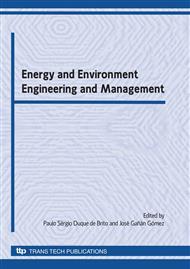p.1
p.9
p.15
p.21
p.27
p.35
p.41
p.49
Sand Mining Pool Eutrophication (Vale do Paraíba, São Paulo, Brazil): Preliminary Assessment
Abstract:
The sand exploration results in ponds, which are formed by groundwater. The supply of nutrients (especially nitrogen and phosphorus) in these environments leads to greater growth of aquatic plants – eutrophication, which can cause interference to the different uses of these ponds. This study aimed to identify the main causes of eutrophication of these environments and propose a management plan to ensure its future use and maintenance of water quality. The experiment was carried out between the cities of São José dos Campos and Jacarei (SP-Brazil) (S 23° 12" 54' e W 45° 57" 47'). The topographic map indicates the flow of water during the rainy season and the places with the greatest possibility of drag of nutrients through laminar erosion. The analysis of water showed the variation in levels of nitrogen (increase) and phosphorus (decrease). This variation occurred in the area of higher elevation to lower elevation. The climatological water balance indicated overland flow and water holding in the soil concentrated in the months of January, February, March and April. The results indicate that the water stored in soil, and environment's topography may influence on the process of eutrophication of the sand mining pool
Info:
Periodical:
Pages:
21-26
Citation:
Online since:
April 2010
Keywords:
Price:
Сopyright:
© 2010 Trans Tech Publications Ltd. All Rights Reserved
Share:
Citation:


